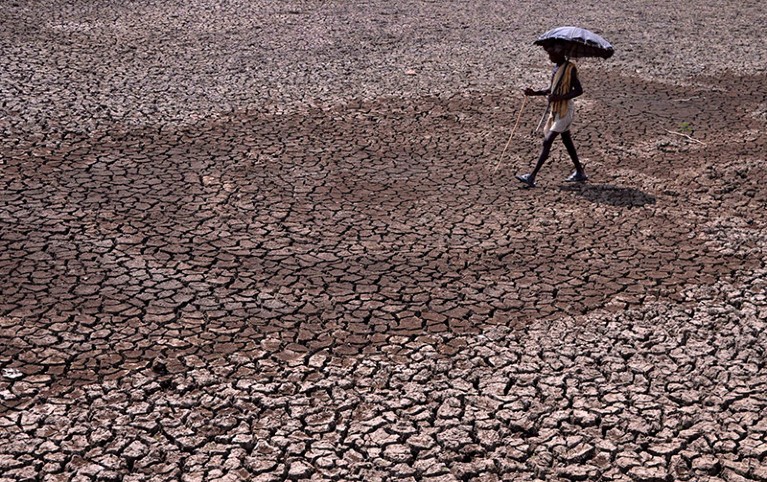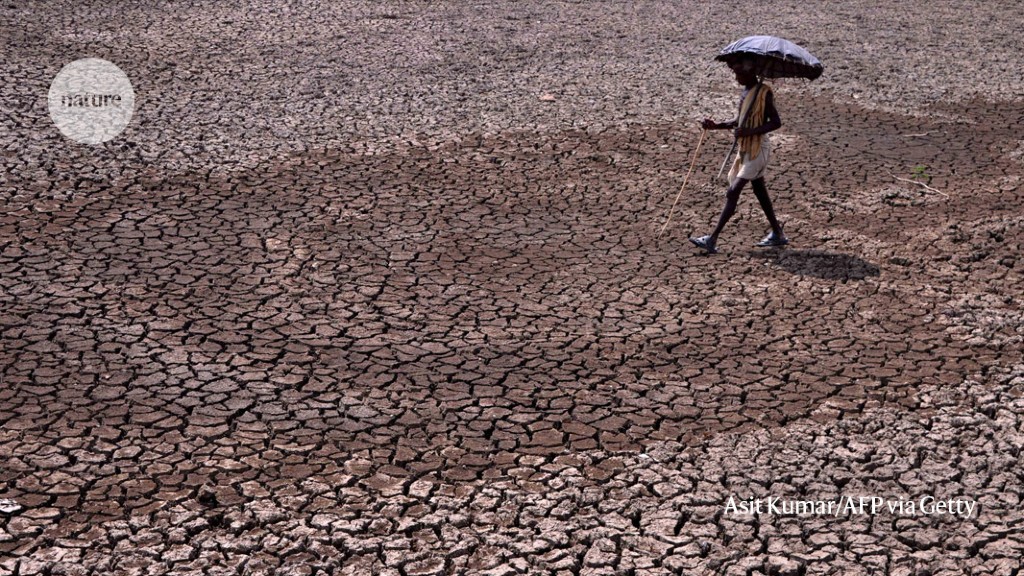[ad_1]

Rainfall within the northeastern state of Odisha may lower by 12% if India’s river-linking plans are applied.Credit score: Asit Kumar/AFP by way of Getty
A big plan to hyperlink a number of of India’s rivers and divert huge volumes of water for irrigation may end in diminished rainfall in already water-stressed areas, in line with a paper1 revealed in Nature Communications final month. The water switch may have an effect on the local weather techniques driving the Indian monsoon and cut back September rainfall by as a lot as 12% in a few of the nation’s states, in line with the research.
The paper is one among a string of unbiased analysis research into the controversial plan. Some scientists have cautioned that too little is thought in regards to the environmental results of the river engineering mission for it to be applied.
The plan, first recommended by the British throughout colonial rule and most lately refined in 2015-2016, is “most likely the most important manipulation of India’s hydrology to ever be conceived”, says Jagdish Krishnaswamy, an eco-hydrologist on the Indian Institute of Human Settlements in Bengaluru.
The Indian water ministry plans to create a community of 15,000 kilometres of canals and hundreds of reservoirs to switch 174 billion cubic metres of water yearly — roughly equal to the yearly water use of neighbouring Pakistan — from areas with considerable water to people who are in want of it. The research’s authors write that the aim of the mission “is to maintain the utmost potential water — which earlier used to achieve oceans from river basins — on the land to satisfy the rising water demand of the nation”.
Different research have assessed the potential impacts of the mission, together with sediment deposition and the implications for aquatic ecosystems, however that is the primary to evaluate how the land and the environment work together to have an effect on the way in which through which water cycles between them.
Subimal Ghosh, one of many authors of the research and a local weather scientist on the Indian Institute of Know-how Bombay in Mumbai, describes the water cycle as involving interplay between atmospheric moisture, oceans, crops releasing moisture and climactic patterns. He says his workforce aimed to review “how a river basin in a single area impacts atmospheric processes and due to this fact impacts different areas as properly”.
“River interlinking plans could also be helpful however we have to have detailed assessments of climatic impacts,” explains Roxy Mathew Koll, a local weather scientist on the Indian Institute of Tropical Meteorology in Pune, and one other co-author of the research.
Extra crops, extra water
A core goal of the river-linking plan is to extend the world underneath irrigation by 35 million hectares. Extra crops would result in increased ranges of moisture being launched from their leaves in a course of often called evapotranspiration. With extra moisture within the air domestically, temperatures would cut back, and rainfall patterns and cloud formation would change.
The workforce used pc modelling to look at the interaction between rainfall, humidity, soil moisture, temperature and wind velocity throughout seven river basins for the monsoon months — June to September. The workforce didn’t mannequin different months.
The research discovered that the impact of the land–environment interplay is highest in September. “September is when crops are at maturity and evapotranspiration is excessive,” explains Koll. This resulted in a discount in September rainfall within the states of Rajasthan, Gujarat, Odisha and Andhra Pradesh of between 6.4% and 12%. The researchers additionally discovered a rise in September precipitation of as much as 12% in northeastern states Bihar and Jharkhand and as much as 10% within the central areas of Maharashtra and neighbouring Telangana.
Diminished rainfall will translate to much less movement in rivers in subsequent months, and this might exacerbate water stress in areas which might be already arid, comparable to Rajasthan and Gujarat, the authors say.
These results don’t issue within the influence of river movement into the ocean, which may additionally have an effect on monsoonal rainfall, additionally they say.
Nature requested India’s Nationwide Water Improvement Company, which oversees the river-linking mission, to touch upon the research however didn’t obtain a response.
Scientists have welcomed the evaluation. The paper highlights new implications of the mission, says Krishnaswamy. “River linking might significantly cut back or neutralize the claimed advantages of inter-linking.”
Rupa Kumar Kolli, a meteorologist on the Worldwide Monsoons Mission Workplace on the Indian Institute of Tropical Meteorology in Pune describes the paper as “a vital contribution”. He says he hopes that the paper will immediate a extra thorough evaluation of the river-linking mission earlier than it may go forward. “There isn’t any going again as soon as the mission is applied.”
[ad_2]


